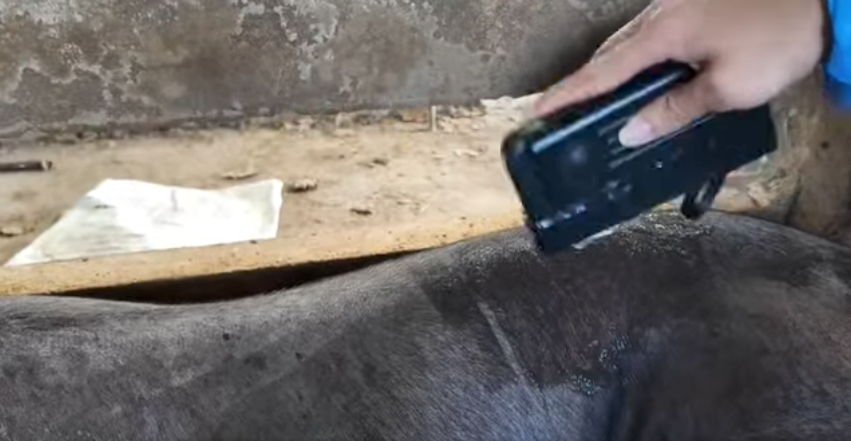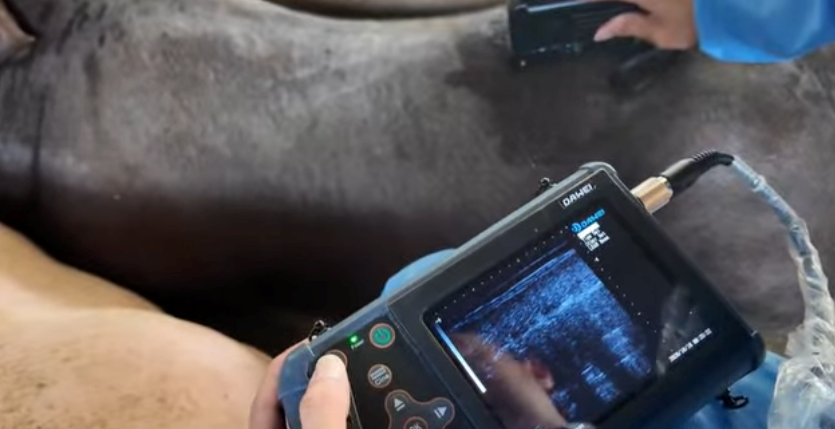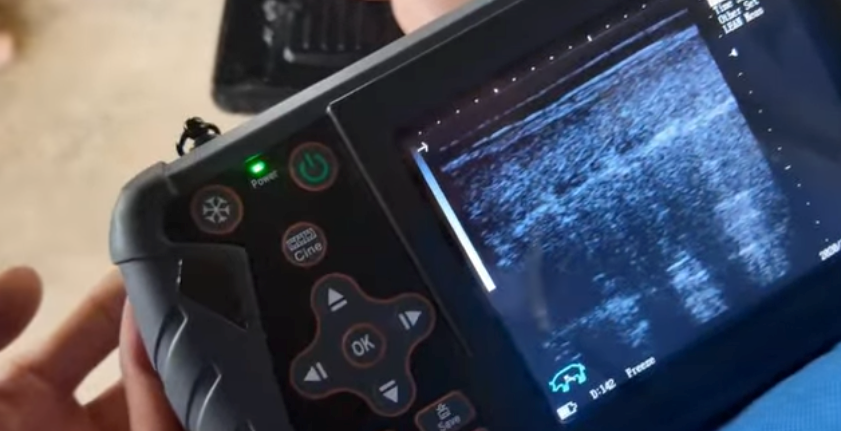What is the Thickness of the Backfat in Pigs?
Backfat thickness in pigs is a critical parameter in swine production, reflecting the animal’s body composition, growth rate, and meat quality. This measurement helps farmers and breeders make informed decisions on feeding, breeding selection, and market readiness. But how thick should backfat be in pigs, and how can you accurately measure it? In this article, we explore the backfat thickness value and how to use the DAWEI S1-vet ultrasound to perform precise measurements.
What is Backfat Thickness Value in Pigs?
Backfat thickness refers to the layer of subcutaneous fat located along the pig’s back, usually measured at specific anatomical points such as the last rib or the 10th rib. It serves as an indicator of fatness, carcass quality, and lean meat yield.
Ideal backfat thickness: For market pigs, the backfat thickness generally ranges from 10 mm to 25 mm, depending on the breed, age, diet, and genetic goals.
Breeding pigs: For sows and boars, the optimal thickness can vary. For example, gilt selection may favor pigs with backfat values around 15–18 mm at 100 kg body weight.
Monitoring backfat thickness ensures that pigs are neither too lean (risking poor reproductive performance or cold stress) nor too fat (leading to inefficient feed conversion and low lean yield).
Why Measure Pig Backfat Thickness?
Breeding selection: Choose gilts and boars with desirable fat deposition for optimal offspring performance.
Nutritional monitoring: Adjust feeding programs based on fat accumulation trends.
Carcass quality grading: Ensure pigs meet the standards for lean meat production.
Health and welfare assessment: Detect imbalances in energy reserves.
How to Measure Pig Backfat Thickness Using the DAWEI S1-vet Ultrasound
The DAWEI S1-vet ultrasound is a professional veterinary imaging device specifically designed for livestock, including swine. It provides accurate, non-invasive backfat measurements with high-resolution imaging.
Step-by-Step Guide:
Prepare the Equipment
Power on the DAWEI S1-vet ultrasound and attach the linear probe, which is ideal for shallow soft tissue imaging.
Position the Pig
Secure the pig in a standing or restrained position. The pig’s back should be clean and accessible.
Apply Coupling Gel
Apply ultrasound gel to the skin over the last rib or 10th rib area to ensure clear signal transmission.
Place the Probe
Gently place the probe on the measurement site, usually 6–7 cm off the midline at the last rib level.
Capture and Analyze Image
Use the DAWEI S1-vet interface to capture a clear cross-sectional image. Identify the layers: skin, subcutaneous fat (backfat), and muscle.
The system allows for direct measurement of the backfat layer thickness in millimeters using its built-in caliper tools.
Record the Data
Save the image and measurement for herd management records or for comparison with standard benchmarks.
Benefits of Using DAWEI S1-vet for Backfat Measurement
High precision: Accurate to within 1 mm.
Portable and easy to use: Lightweight design suitable for field use.
Durable and waterproof: Ideal for harsh farm environments.
Multi-species compatibility: Can also be used for cattle, sheep, and other livestock.
Measuring backfat thickness in pigs is an essential practice for optimizing productivity, animal health, and meat quality. With the DAWEI S1-vet ultrasound, producers can perform quick, accurate, and non-invasive evaluations of fat layers, leading to better-informed decisions in breeding and feeding programs. Whether you’re a commercial swine farmer or a veterinary professional, the S1-vet is a reliable partner for modern livestock management.
Post time: Apr-30-2025






